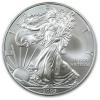| Online: | |
| Visits: | |
| Stories: |

| Story Views | |
| Now: | |
| Last Hour: | |
| Last 24 Hours: | |
| Total: | |
“Utility” in Economics vs. “Happiness” in Normal Conversation
mises.ca / by Robert P. Murphy / May 25th, 2015
In my last blog post here at Mises CA, I picked up on a dispute over interpersonal utility comparisons that involved some prominent free-market economists. David R. Henderson (whose side I had taken) linked to my post with approval at EconLog, and added comments of his own. From the comments at my Mises CA post and especially at David’s, I realized that many people did not appreciate that David and I were talking about “utility” as it is used in modern price theory. This is not the same thing as “happiness” or “pleasure” if those terms refer to physical sensations or psychological states. In the present post I’ll explain the distinction.
Utility vs. Happiness
The critics kept asking Henderson (and me) variants of, “Are you telling me you don’t think a homeless guy gets more happiness from a blanket than a millionaire would?” But in terms of the debate over interpersonal utility comparisons, such a question misses the point.
In modern (meaning since the early 20th century) price theory–both in mainstream neoclassical economics as well as in Austrian theory in the hands of Mises–“utility” is simply a concept tied up with rational choice. To say that Option A gave an individual more utility than Option B really doesn’t mean anything else except that the individual preferred A to B.
For example, suppose Jim and Mary are at a restaurant and must pick between two flavors of ice cream for dessert. Jim chooses vanilla while Mary chooses chocolate. We can say that vanilla gave Jim more utility than chocolate did, while chocolate gave Mary more utility than vanilla did. It is utter nonsense to ask, “What percentage more utility did the vanilla give Jim than the chocolate?” and it is supremely utter nonsense to ask, “Did Jim get more utility from the vanilla than Mary got from the chocolate?”
Now it’s true, there is presumably a lot of biochemical activity associated with Jim and Mary’s choices. Neuroscientists might have many things to tell us about the same situation. But as economists, if we are interpreting their answers to the waiter as voluntary, purposeful behavior (“rational choice” in a neoclassical framework, or “human action” in Mises’ framework), the idea of utility is bound up with the choice itself. We don’t care about the physiological facts that might be involved in an explanation of each person’s preferences. Maybe a scientist can measure the endorphins in Jim versus Mary when each takes the first bite of the dessert, but that doesn’t have anything to do with “utility” as it is used in modern price theory.
The post “Utility” in Economics vs. “Happiness” in Normal Conversation appeared first on Silver For The People.
Source: http://silveristhenew.com/2015/05/25/utility-in-economics-vs-happiness-in-normal-conversation/



